To give doves a comfortable living space, the cage needs to be designed to be both wide and high, each compartment of the cage should only house one pair and should not be mixed. Doves are quite sensitive and shy, so it is necessary to guard against attacks from mice, cats and some other wild animals by using barbed wire...
Depending on the species and breeding conditions, each dove will have a different time to be ready to reproduce.
Determining when young birds are old enough to breed is a rather complicated issue and depends on many factors such as diet, living environment, etc.
However, normally, young birds raised from 10 months to 1.5 years can reproduce.
It is best to let the young birds mature to at least 1 year of age before mating, as this is considered the most optimal and effective time.
Making a cage to breed doves
To ensure that the mother and father birds can safely mate and care for their young from the incubation stage, you need to build a sturdy and suitable cage.
There are two important points to note when designing a cage for breeding doves: the size and height of the cage.
To give turtledoves a comfortable living space, the cage needs to be designed to be both wide and high. Each compartment of the cage should only house one pair and should not be mixed.
Doves are quite sensitive and shy, so it is necessary to guard against attacks from rats, cats and other animals by using strong barbed wire and raising the cage at least 1m above the ground. When doves are bothered by cats, it can cause the female to not be able to lay eggs, leading to infertility.
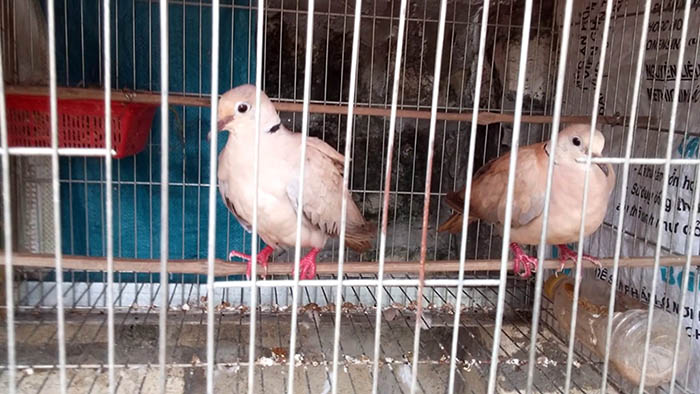
Raising turtledoves in general and breeding turtledoves in particular is a hobby of many Vietnamese people.
A sturdy cage should be built so that the male and female birds can mate with confidence. The cage should be at least 50 x 70 x 80 cm wide to allow the birds to move freely and nest.
Doves like their nests to be as high as possible, and if you place the nest high enough, the pair will be extremely happy and more alert, while placing the cage low will easily make them shy of their surroundings.
Food for breeding turtle doves
During the breeding season, doves often prefer to eat rice, which is also their main food. However, to ensure nutritional balance, increase resistance and protect health, female birds should be supplemented with other foods such as sesame, peanuts, sweet mustard seeds, etc.
During the breeding process, doves will lose many minerals, so in addition to supplementing nutritious foods, you can also add salt to drinks to supplement necessary minerals.
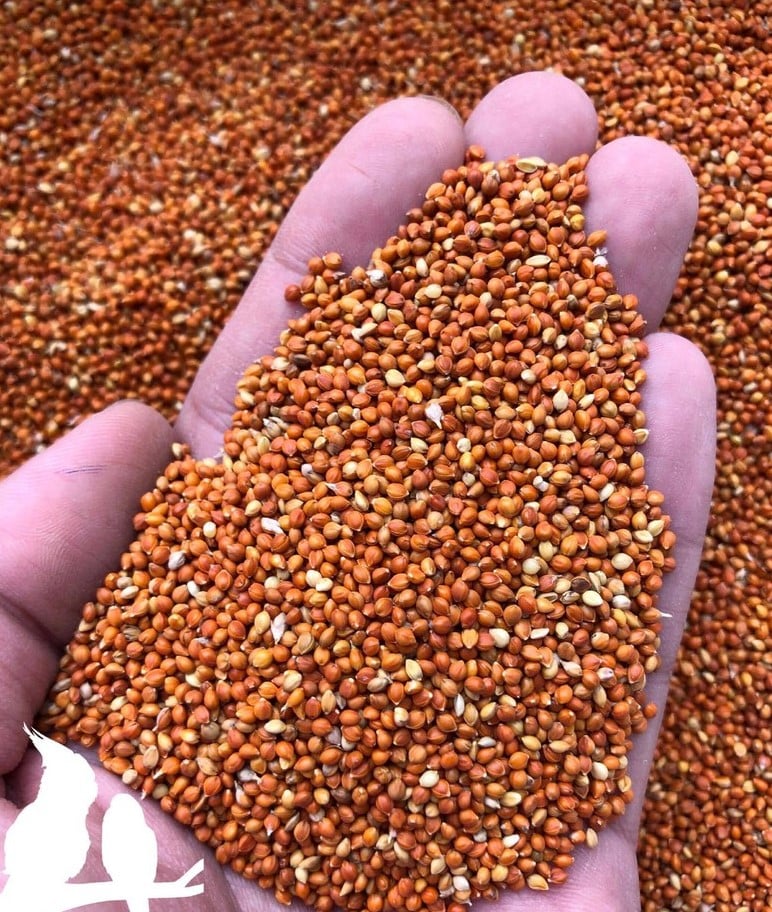
The food for breeding doves includes a type of millet imported from Thailand.
The experience of some dove owners raising birds for breeding is to feed them with Thai grass - a type of millet imported from Thailand.
This grass contains many essential nutrients such as sugar, omega, calcium, and protein, not only helping to restore health but also enhancing resistance, preventing digestive diseases, epidemics and flu, helping doves avoid weakness after the breeding process and have smoother feathers.
Pairing for turtledoves
The mating process is very important for them. Normally, young birds are ready to mate after being raised for 10-18 months. Initially, the two birds should be introduced gradually before mating.
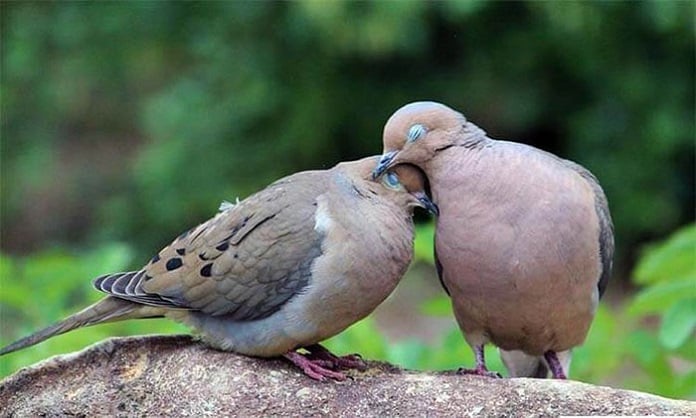
Doves mate in the wild.
You can keep them in two different cages for a period of time, then move them into the same cage to avoid fighting.
When you see the male and female birds approaching and showing signs of courtship, then you can put them in the same cage.
Note that if after being kept together they fight or cannot get along, separate them and continue to keep them separately and continue to observe the situation.
Sometimes the pairing process will be difficult and requires careful observation and patience to help the birds have the best environment and conditions for mating and reproduction. This pairing process is very important.
Choose turtle dove breed
Poor breeding will result in birds that frequently have health problems, illnesses, or have unattractive, unevenly colored, and dull feathers.
Poor selection of breeds can affect future fertility, for example, females may have difficulty in breeding or lay eggs irregularly. For males, poor selection of breeds can lead to eggs that do not hatch or empty eggs.
Pairing turtle doves
Doves are sensitive birds and they do not easily accept their breeding partners. Therefore, you need to pay attention to observe and care carefully, especially to prevent fighting between male and female birds.
In case of conflict, you need to separate them immediately and let them get used to each other again from the beginning. In addition, there are many cases where the pairing is not successful, such as inbreeding (male and female birds from the same parents), or cases where the birds do not like or accept each other.
In this situation, it is necessary to consider mating another pair of birds to avoid wasting time and risking accidents for the two birds.
Incubation phase
After laying 1 to 2 eggs, the male and female birds will begin to take turns incubating the eggs. The incubation period of doves usually lasts from 15 to 17 days after the female begins to lay eggs, after mating for 5 to 7 days.
Most of the time, the female bird will be responsible for incubating the eggs, but the male bird will take turns incubating when the female leaves the nest to find food. However, not all male birds are willing to help their mate. Therefore, constant observation and attention are needed to handle the situation promptly.
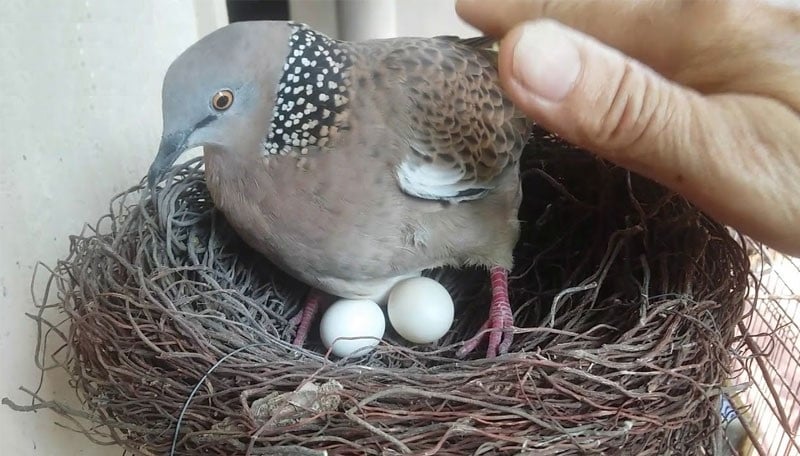
Doves incubate eggs.
During the incubation process, if the cage is often disturbed by outside disturbances such as mice and cats, it may cause the female bird to abandon the nest and stop incubating. Therefore, it is necessary to build a sturdy and higher cage, and take measures to catch and repel mice and other insects to protect the nest and eggs of the dove.
Pay attention to the surrounding environment and adjust the temperature of the incubator so that it is not too hot or too cold, the fluctuating temperature can affect the development of the eggs. To keep the temperature stable, you can use a heating lamp for both the eggs and the parent birds, because turtledoves are often afraid of the cold.
If there are signs that the eggs are not hatching or the bird is not incubating, it is necessary to check carefully to see if there is any problem with the eggs or if the cage is affected by external factors that affect the female bird.
Hatching time
Normally, the dove eggs hatch after about 15 days, and then the mother bird will start laying the next batch in about 1.5 - 2 months. To avoid interrupting the dove's laying cycle, it is necessary to separate them from their children to start a new laying process.
A little trick that many dove breeders often apply is to raise some Japanese doves to be in charge of incubating eggs and raising chicks. Applying this cycle correctly can increase the productivity of doves by 3 times per month.
Feed the baby turtle doves
Baby birds do not know how to open their mouths at first, so you need to have a way to train them to eat and create reflexes later.
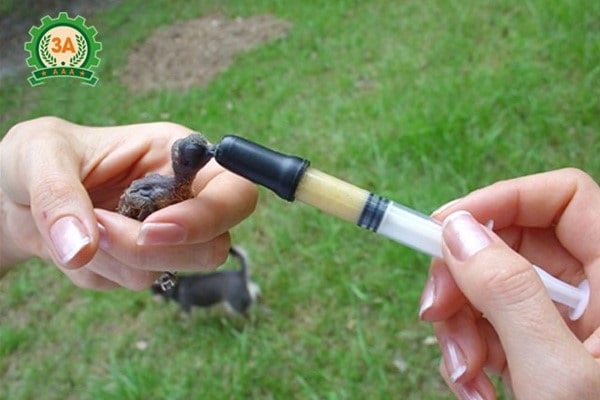
How to feed baby turtle doves.
First, you can use 2 clean plastic bottles (similar to eye drop bottles) or a new syringe (if used, wash the syringe thoroughly). The purpose is to feed and drink into the mouth of the baby dove.
For food, you can use special bird feed for turtledoves or feed for baby birds, add warm water and mix into a thick mixture. Let the feed cool down a bit, until it is just a little warm, then put it in a bottle or syringe.
If the baby dove cannot open its mouth yet, you need to gently squeeze both cheeks to open its mouth, squeeze the syringe or bottle very gently to feed the bird little by little. Avoid letting the baby dove eat too much at once, it can easily choke. The way to give the bird water is similar.
After a few times, the young dove will gradually get used to it and practice opening its mouth when eating, at which point you will no longer need to squeeze its mouth. You can feed the bird in many small meals, about 4 times a day, when you feel the bird's crop is slightly tense, it is possible. Do not force the bird to eat too much or too quickly.
Source: https://danviet.vn/nuoi-chim-cu-gay-la-chim-hoang-da-tieng-hot-van-nguoi-me-day-la-ky-thuat-nuoi-chim-de-can-cha-kip-20250228093119116.htm






















































































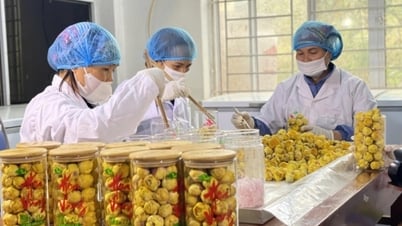












Comment (0)